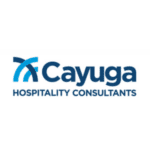 Standing out from the crowd is more challenging than ever. With countless accommodation options available to travelers, from boutique hotels to global chains and alternative lodging platforms like Airbnb, hotels must find a way to carve out a distinct identity in the minds of potential guests. In a crowded market, the concept of positioning becomes crucial.
Standing out from the crowd is more challenging than ever. With countless accommodation options available to travelers, from boutique hotels to global chains and alternative lodging platforms like Airbnb, hotels must find a way to carve out a distinct identity in the minds of potential guests. In a crowded market, the concept of positioning becomes crucial.
Positioning, a term popularized by Al Ries and Jack Trout, refers to the strategic process of establishing a brand’s unique place in the market. It’s about shaping perceptions to differentiate your hotel from the competition, ensuring that your target audience sees your property as the preferred choice. Ries and Trout’s ideas, which revolutionized the marketing field, emphasize that effective positioning is not just about what you offer but how guests perceive you among all the choices in the marketplace.
In the hotel industry, positioning is crucial because it directly influences the types of guests you attract and how much they are willing to pay. A well-positioned hotel doesn’t just compete on price—it competes on value, attracting guests willing to pay a premium for a distinctive experience that meets their needs and desires.
This blog aims to delve into three critical aspects of positioning that can help hotels establish a strong foothold in their local markets. By defining a unique value proposition, understanding and targeting the ideal guest profile, and creating a consistent brand experience across all touchpoints, hotels can differentiate themselves from the competition and attract guests who value paying more for what they offer. These strategies, rooted in the timeless principles of Al Ries and Jack Trout, are essential for any hotel aiming to thrive in a competitive landscape.
1. Defining a Unique Value Proposition (UVP)
At the heart of any successful positioning strategy lies the Unique Value Proposition (UVP). This concept is how a hotel distinguishes itself in a crowded marketplace. A UVP is more than just a slogan or a catchy phrase; it’s a clear and compelling statement communicating precisely what makes your hotel different. It answers the critical question: “Why should guests choose your hotel over others?”
Al Ries and Jack Trout famously asserted that “perception is reality,” meaning that the audience ultimately defines its position in the market. In the hotel industry, this means that your UVP must not only be unique but also resonate with the perceptions and expectations of your target guests. By owning a distinct position in their minds, your hotel can create a robust and favorable image that makes it the preferred choice.
Application in the hotel industry
To identify and define a compelling UVP, hotels must first understand what they do best. The hotel must honestly assess the property’s strengths and what it can offer that others cannot. Whether it’s the luxury of your accommodations, the prime location, exceptional service, or a unique experience like wellness retreats or historical significance, your UVP should highlight the aspect that sets your hotel apart.
For example, a hotel in a historical building might position itself around the charm and stories of the past, offering guests a unique opportunity to step back in time. Alternatively, a modern, tech-savvy hotel might emphasize its cutting-edge amenities and seamless digital experience as its UVP, appealing to business travelers and younger, tech-oriented guests. Another example could be a wellness resort focusing on health and rejuvenation, attracting guests who prioritize wellness during their travels.
These examples show that a well-defined UVP not only differentiates a hotel but also attracts guests who are explicitly looking for the unique value the hotel offers.
Practical tip
To craft a compelling UVP, start by conducting a thorough competitive analysis. The analysis should involve evaluating what other hotels in your area offer and identifying gaps in the market that your hotel can fill. Look for areas where your hotel can excel—whether it’s offering superior service, unique experiences, or simply being more attuned to the needs of a particular type of guest.
Once you’ve identified these differentiators, distill them into a clear, concise UVP statement. The UVP statement should be understandable and compelling enough to be used across all marketing channels, from your website and social media to advertising and guest communications. The goal is to ensure that every touchpoint reinforces your hotel’s unique value, making it the obvious choice for your target guests.
2. Understanding and targeting the ideal guest profile
One of the core principles Al Ries and Jack Trout emphasized is the necessity of focusing on a specific target market. They argue that attempting to appeal to everyone often results in a diluted brand that fails to stand out. Their principle is especially relevant in the hotel industry: understanding and targeting the ideal guest profile is essential for effective positioning.<
Successful positioning goes beyond broad demographic categories. It involves deeply understanding your ideal guests’ needs, preferences, and desires. By honing in on these factors, hotels can tailor their offerings to resonate strongly with a particular group, making their property the first choice for these guests. Whether it’s a preference for luxury, eco-friendly accommodations, or business-friendly amenities, catering to these needs helps a hotel carve out a distinct niche in the market.
Application in the hotel industry
Hotels can leverage data analysis to define their ideal guest profile. The process involves collecting and analyzing data on demographics (age, gender, income level), psychographics (lifestyle, values, interests), spending behavior, and travel motivations. For example, a hotel might discover through data analysis that many of its guests are business travelers who prioritize convenience, fast Wi-Fi, and proximity to business districts. Alternatively, a hotel might find that its most loyal guests are eco-conscious tourists who value sustainability and local experiences.
Once the hotel has identified the ideal guest profile, it can align its offerings with their expectations. For instance, a boutique hotel in a vibrant urban area might be the perfect choice for young, adventurous travelers, offering local cultural experiences and trendy amenities. Similarly, a luxury resort might focus on attracting high-net-worth individuals by emphasizing exclusivity, personalized service, and world-class facilities.
Examples of effective targeting abound in the industry. Consider a hotel that caters specifically to wellness-focused travelers by offering a full range of spa services, healthy dining options, and wellness programs. By tailoring its offerings to meet the needs of this niche market, the hotel can position itself as the top choice for guests who prioritize health and wellness during their travels.
Practical tip
To effectively target your ideal guests, start by creating detailed guest personas. These personas are fictional representations of your ideal guests based on actual data and insights. Each persona should include key details such as demographics, travel motivations, preferences, and pain points. For example, you might create a persona for “Corporate Chris,” a mid-level executive who travels frequently for business and values convenience and efficiency above all else. Another persona could be “Eco Emma,” a millennial traveler who prioritizes sustainability and seeks eco-friendly hotels.
Once the hotel creates these personas, use them to guide your marketing messages, service offerings, and guest experiences. Ensure that every touchpoint—from your website to your in-room amenities—speaks directly to the needs and preferences of these personas. Consistency is key: by consistently targeting your ideal guest across all channels, you reinforce your hotel’s position in the market and make it more likely that the right guests will choose your property.
By focusing on a specific target market and tailoring offerings accordingly, your hotel can build a strong, loyal customer base willing to pay a premium for the experience you provide.
3. Creating a consistent brand experience across all touchpoints
Delivering a consistent brand experience is a critical aspect of successful positioning. Al Ries and Jack Trout emphasize that all brand communications and customer interactions must align with a company’s positioning strategy to build a robust and coherent brand image. Every touchpoint— digital or physical—in the hotel industry should reflect and reinforce the hotel’s unique positioning. Consistency helps create a seamless experience that meets and exceeds guest expectations, ensuring the hotel remains top-of-mind when recommending friends and colleagues or future stays.
A consistent brand experience solidifies the hotel’s identity and builds trust with guests. When guests encounter a unified message and experience across all touchpoints, they are more likely to perceive the hotel as reliable and professional, which is essential for cultivating loyalty and encouraging recommendations and repeat business.
Application in the hotel industry
To ensure that every guest touchpoint reinforces a hotel’s positioning, it’s essential to consider the entire guest journey, from the initial discovery phase to post-stay follow-ups. The guest journey includes the hotel’s website, social media presence, booking process, on-property experience, and post-stay communication.
For example, if a hotel positions itself as a luxury destination, this positioning should be evident at every stage. The website should feature high-quality visuals, elegant design, and a smooth, intuitive booking process that reflects the luxury experience. During the stay, guests should encounter luxurious amenities, personalized service, and a refined atmosphere that aligns with the hotel’s high-end positioning. Even post-stay communications, such as thank-you emails or loyalty program offers, should maintain the tone and quality expected from a luxury brand.
Hotels that successfully create a seamless brand experience often ensure their digital presence mirrors the on-property experience. For instance, a boutique hotel known for its artistic flair and personalized service might extend this experience online by featuring unique, artistic elements on its website and offering personalized recommendations during the booking process. Similarly, a wellness resort that promotes tranquility and rejuvenation might use soothing colors, calming imagery, and streamlined navigation on its website, followed by serene, spa-like experiences on-site.
Practical tip
Hotels should conduct regular brand audits to maintain consistency across all channels. These audits involve reviewing all brand touchpoints—from marketing materials and website content to guest services and physical spaces—to ensure they align with the hotel’s positioning strategy. Any discrepancies or inconsistencies should be addressed promptly to prevent a fragmented brand image.
Additionally, developing a comprehensive brand guideline document can be invaluable. A brand guideline should outline the hotel’s positioning, tone of voice, visual style, and key messaging. It should be shared across all departments, including marketing, operations, and guest services, to ensure everyone is aligned with the brand’s strategy. This alignment helps maintain a consistent guest experience, whether a guest interacts with the hotel online, during their stay, or after checking out.
You reinforce your property’s unique value proposition by consistently delivering a brand experience that aligns with the hotel’s positioning. A consistent brand experience enhances guest satisfaction and strengthens your brand’s reputation, making it easier to attract and retain guests who appreciate and are willing to pay for the experience you offer.
Where it goes wrong
Even with the best intentions, positioning can go awry when hotels fail to commit to their strategy fully or when internal and external pressures lead to misalignment. Several common pitfalls can undermine a hotel’s positioning efforts, weakening its market presence and confusing potential guests.
- Thorough homework: One of the hotels’ primary mistakes is not doing their homework thoroughly. Not taking the time can manifest in a lack of deep market research, resulting in a poorly defined Unique Value Proposition (UVP) or an unclear understanding of the ideal guest profile. Without this critical groundwork, a hotel may struggle to differentiate itself, leading to vague messaging and an unfocused brand identity that fails to resonate with any particular guests.
- Stick to the positioning: Another major issue arises when hotels do not stick to their positioning. When management becomes nervous about low occupancy, there’s a temptation to cast a wider net, offering discounts or promotions that appeal to a broader audience but dilute the brand’s identity. Lack of consistency can confuse the target market and erode the hotel’s perceived value, making it harder to attract the high-paying guests the hotel initially sought to target.
- Alight the team: Internal alignment is another critical challenge. For a hotel’s positioning to be effective, all departments must be on the same page, delivering a consistent brand experience. However, misalignment between departments—such as when the branding of the hotel’s restaurant does not match the overall hotel brand—can create a fragmented guest experience. This inconsistency can leave guests with mixed impressions, weakening the hotel’s position in the market.
- Be confident: Finally, hotel management may become anxious when competitors attempt to occupy the same market position. In response, they might react hastily by changing their positioning strategy or trying to compete on price, which can be detrimental. Rather than reacting out of fear, successful hotels stay true to their positioning and are confident in the unique value they offer. Consistency in messaging and experience is critical, even when the competition is fierce.
By recognizing these potential pitfalls and staying committed to their positioning strategy, hotels can avoid common mistakes that weaken their market presence and build a strong, coherent brand that resonates with their ideal guests.
Conclusion and takeaways
Effective positioning is not just a marketing strategy—it’s a necessity. As guests have an overwhelming array of choices, a hotel’s ability to differentiate itself through clear and compelling positioning becomes crucial. By focusing on what truly sets the hotel apart, appealing to the right guests, and delivering a consistent brand experience, hotels can create a robust and lasting impression that drives loyalty and profitability.
To recap, successful positioning in the hotel industry hinges on three key aspects:
- Defining a Unique Value Proposition (UVP): Your UVP is the foundation of your positioning strategy. It communicates what makes your hotel unique compared to other accommodation options. By owning a distinct position in the minds of your target guests, you ensure that guests perceive your property as the best choice for their specific needs and desires.
- Understanding and targeting the ideal guest profile: Not every guest is your ideal guest. Focusing on a specific target market allows you to tailor your offerings and messaging to meet the precise needs of those most likely to appreciate and pay a premium for your hotel offers. Understanding your ideal guest profile helps create a more focused and effective positioning strategy.
- Creating a consistent brand experience across all touchpoints: Consistency reinforces your hotel’s positioning. Every guest interaction, from the initial online search to the post-stay follow-up, should align with your hotel’s brand promise. A consistent brand experience builds trust, strengthens your brand’s identity, and ensures guests remember your property for the right reasons.
However, positioning can go wrong if hotels fail to commit fully to their strategy. Common pitfalls include insufficient research, straying from the defined positioning when occupancy is low, internal misalignment, and reacting impulsively to competitor actions. Recognizing and avoiding these mistakes is crucial for maintaining a solid market position.
These strategies allow hotel managers and marketers to differentiate their properties in even the most crowded markets. The result is increased visibility and the ability to attract high-paying guests who see value in your hotel’s unique offerings. Ultimately, effective positioning leads to a more substantial market presence, enhanced guest loyalty, and greater long-term profitability.
Now is the time to assess your hotel’s positioning and take the necessary steps to ensure that your property stands out for all the right reasons. By defining your UVP, understanding your ideal guests, and delivering a consistent brand experience, you can establish a strong market position that attracts the right guests—those willing to pay a premium for an experience only your hotel can provide.

















